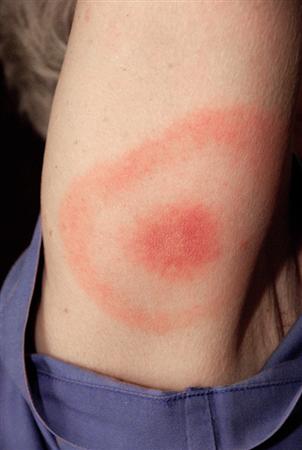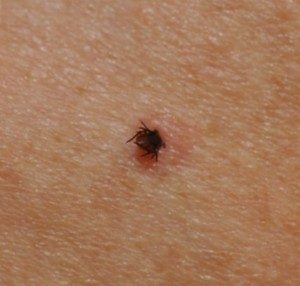Why You Should Get Involved with the Lymecare Alliance Community
Why You Should Get Involved with the Lymecare Alliance Community
Blog Article
Lyme Illness Understanding Month-- Learn How to Protect Yourself
April is designated as Lyme Condition Recognition Month, offering as a vital tip of the value of understanding and avoiding this increasingly widespread tick-borne ailment. With increasing incidences reported throughout different regions, it is crucial to furnish ourselves with knowledge concerning efficient prevention strategies and early symptom acknowledgment. By adopting simple yet efficient practices, people can substantially reduce their threat of exposure. As we discover the nuances of Lyme condition, it ends up being clear that awareness is not practically details; it has to do with taking purposeful action to shield ourselves and our neighborhoods. What actions can we execute today?
Comprehending Lyme Disease
Understanding Lyme Illness starts with recognizing its origins and transmission. This transmittable condition is mainly brought on by the microorganism Borrelia burgdorferi, which is transmitted to humans with the bite of contaminated black-legged ticks, commonly referred to as deer ticks. These ticks flourish in verdant and woody areas, making outdoor activities a prospective danger for direct exposure.
The lifecycle of the tick is crucial to comprehending exactly how Lyme Illness spreads (Lymecare Alliance). Normally, the ticks start feeding in the larval phase, often acquiring the bacterium from small animals, such as deer or rodents. As they become adults or nymphs, they can then transfer the germs to larger hosts, including people

Recognizing Signs And Symptoms Early
Very early recognition of Lyme Disease symptoms is crucial for reliable therapy and healing. Lyme Illness, transmitted largely via the bite of contaminated black-legged ticks, can result in severe complications otherwise attended to quickly. The initial signs and symptoms commonly appear within 3 to thirty days complying with a tick bite and may consist of high temperature, chills, exhaustion, muscle mass and joint aches, and puffy lymph nodes.
One of the hallmark indicators of Lyme Illness is the particular erythema migrans breakout, which resembles a "bull's- eye" pattern and commonly emerges at the website of the tick bite. This breakout may not show up in every situation, making it important to continue to be attentive about various other symptoms.
People that have been in areas where Lyme Disease is native must be careful and check their wellness very closely after potential exposure. Awareness and education regarding these very early signs are crucial in combating the impact of Lyme Disease.
Reliable Avoidance Techniques
Preventing Lyme Disease needs a proactive approach, especially for individuals who regular areas where ticks are common. Comprehending efficient prevention techniques is important in lessening exposure to these disease-carrying arachnids.
First, it is vital to wear ideal garments when in tick-infested environments. Long sleeves, long trousers, and closed-toe shoes can significantly lower skin exposure. Consider dealing with clothes with permethrin, an insect repellent that continues to be efficient through several washes.
In addition, applying a tick repellent containing a minimum of 20% DEET to exposed skin can better secure against attacks. On a regular basis looking for ticks after exterior activities is essential; carry out thorough body examinations, especially in cozy, moist locations such as behind the site knees and within the hairline.
Creating a tick-safe atmosphere around your home is additionally useful. Maintain your lawn properly maintained by mowing the yard routinely, eliminating fallen leave trash, and developing barriers of gravel or timber chips to different wooded locations from entertainment spaces.
What to Do After a Bite
Quickly after a tick bite, it is vital to take speedy activity to lessen the threat of Lyme Condition transmission. Draw upwards with constant, also stress; do not turn or snag the tick, as this might create components to break off and remain in the skin.
Monitor the bite site for signs of infection, such as soreness, swelling, or a breakout. It is vital to be watchful for signs of Lyme Illness, which might consist of high temperature, chills, tiredness, and joint pain, usually showing up within 3 to 1 month post-bite. If you see a particular "bull's- eye" breakout or experience any one of these signs, seek medical focus quickly.
Educate your healthcare provider of the tick bite, specifically if the tick was attached for more than 24 hours or was engorged. Early treatment is crucial in protecting against the start of Lyme Condition and making sure efficient treatment if required.
Resources for More Info
Understanding the actions to take after a tick bite is essential, but so is having accessibility to reputable resources for continuous education concerning Lyme Illness. Countless organizations provide detailed information to aid individuals remain informed concerning prevention, signs and symptoms, and treatment alternatives.
The Centers for Disease Control and Avoidance (CDC) offers a wide range of resources, consisting of standards on tick prevention and details on Lyme Disease stats. Their website is a crucial starting factor for anyone looking for expertise about the illness's effect and how to alleviate risks.
An additional valuable source is the Lyme Condition Organization, which focuses on education, research study, and campaigning for (Lymecare Alliance). Their system features short articles, webinars, and updates on the most up to date clinical searchings for, making it an important device for both patients and health care specialists
Additionally, the American Lyme Illness Structure gives academic materials tailored for various target markets, consisting of caretakers and exterior fanatics. They additionally host area occasions that advertise recognition and avoidance approaches.
For those looking for assistance, companies like the Tick-Borne Condition Partnership offer resources for linking with regional support system and accessing patient-centered care. Utilizing these resources can encourage people to shield themselves and their areas properly.
Verdict

The lifecycle of the tick is critical to comprehending how Lyme Illness spreads (Lymecare Alliance).The risk of Lyme Illness increases throughout read this warmer months when ticks are most active, especially in regions where the illness is native to the island, such as the Northeast, Midwest, and parts of the West Shore of the United States. Lyme Illness, sent largely with the bite of infected black-legged ticks, can lead to extreme problems if not addressed without delay.Instantly after a tick bite, it is vital to Home Page take swift action to minimize the danger of Lyme Illness transmission. Understanding Lyme illness, recognizing its signs and symptoms, and executing reliable prevention techniques can dramatically reduce the danger of infection
Report this page